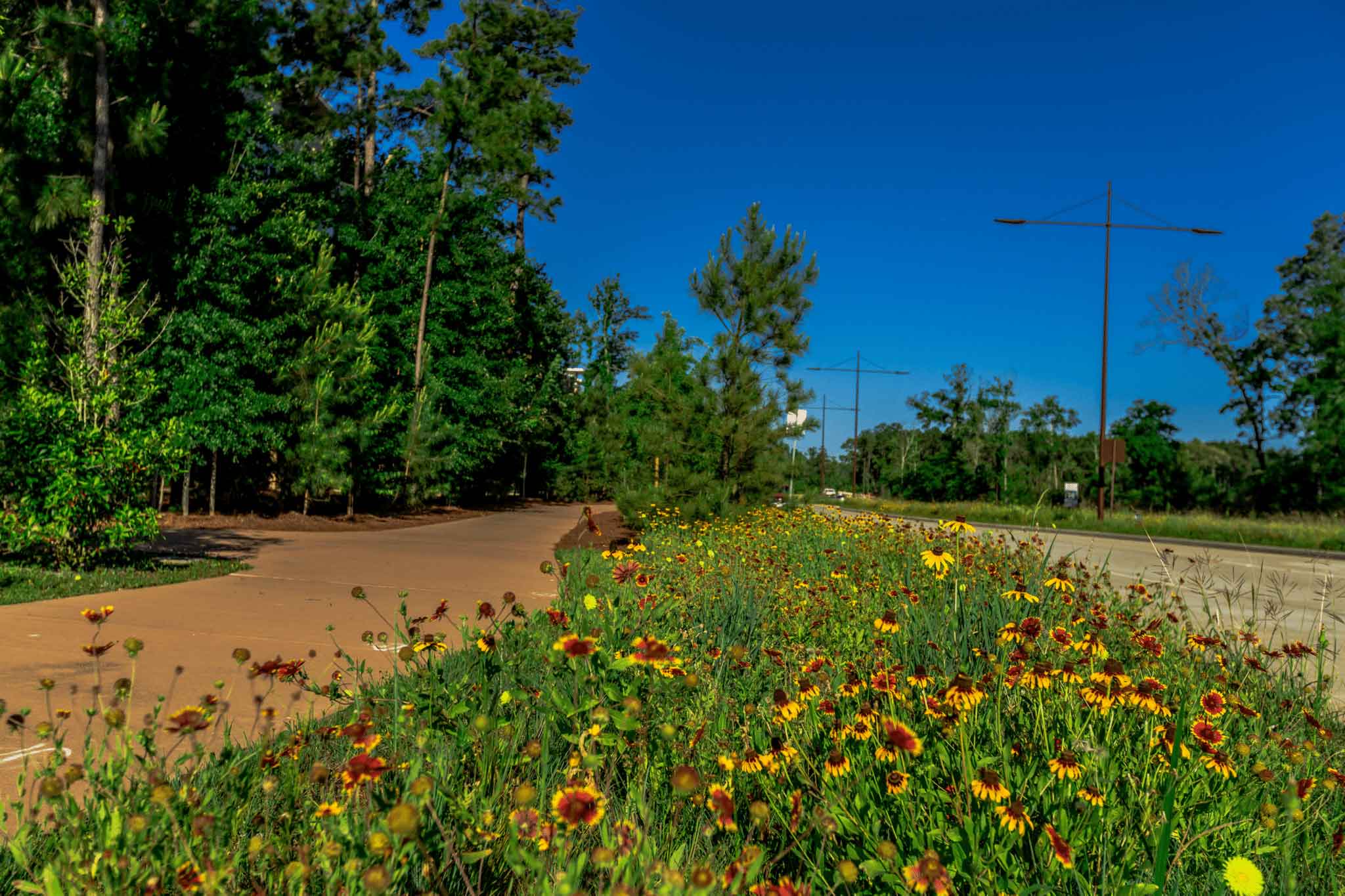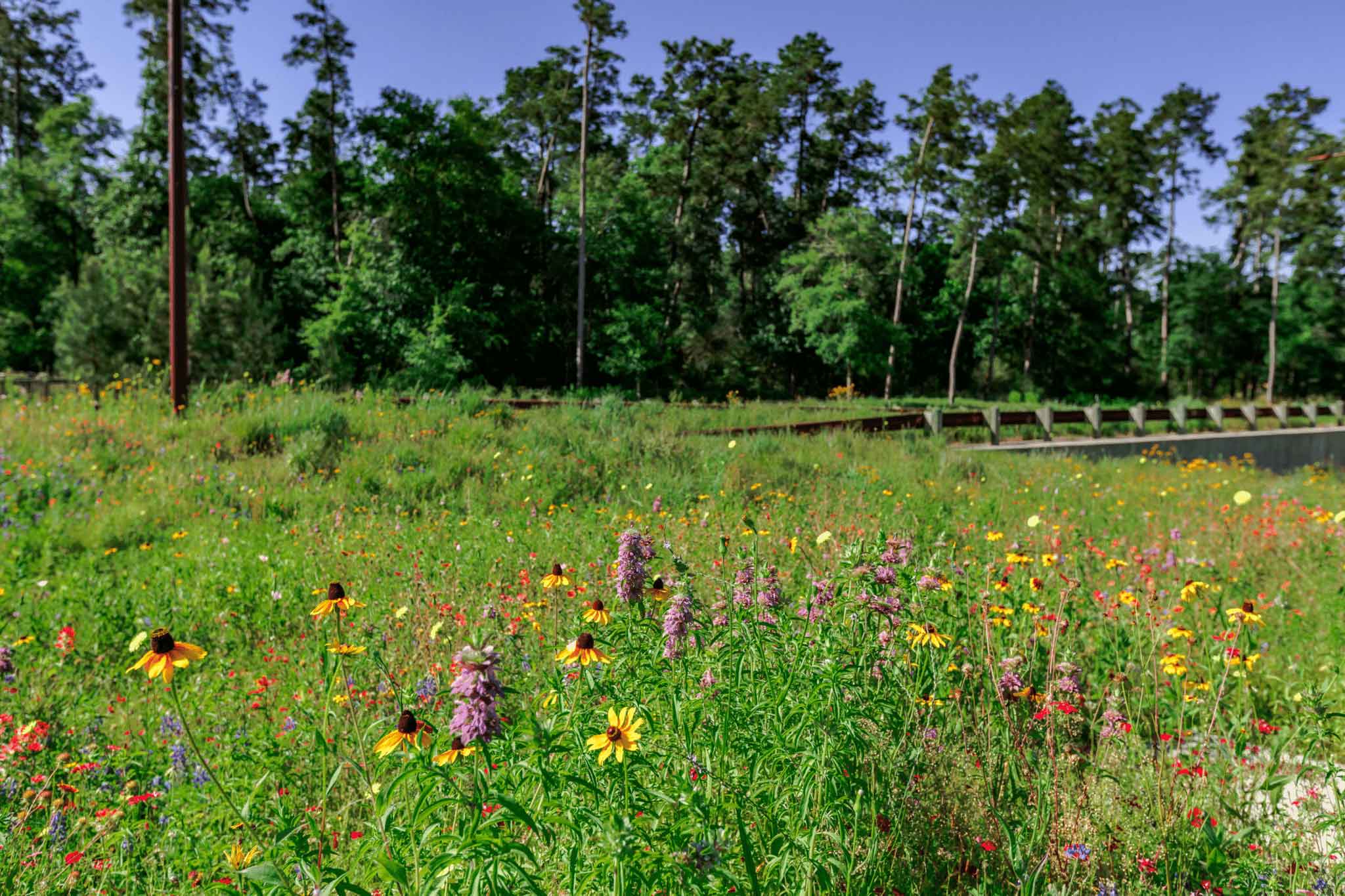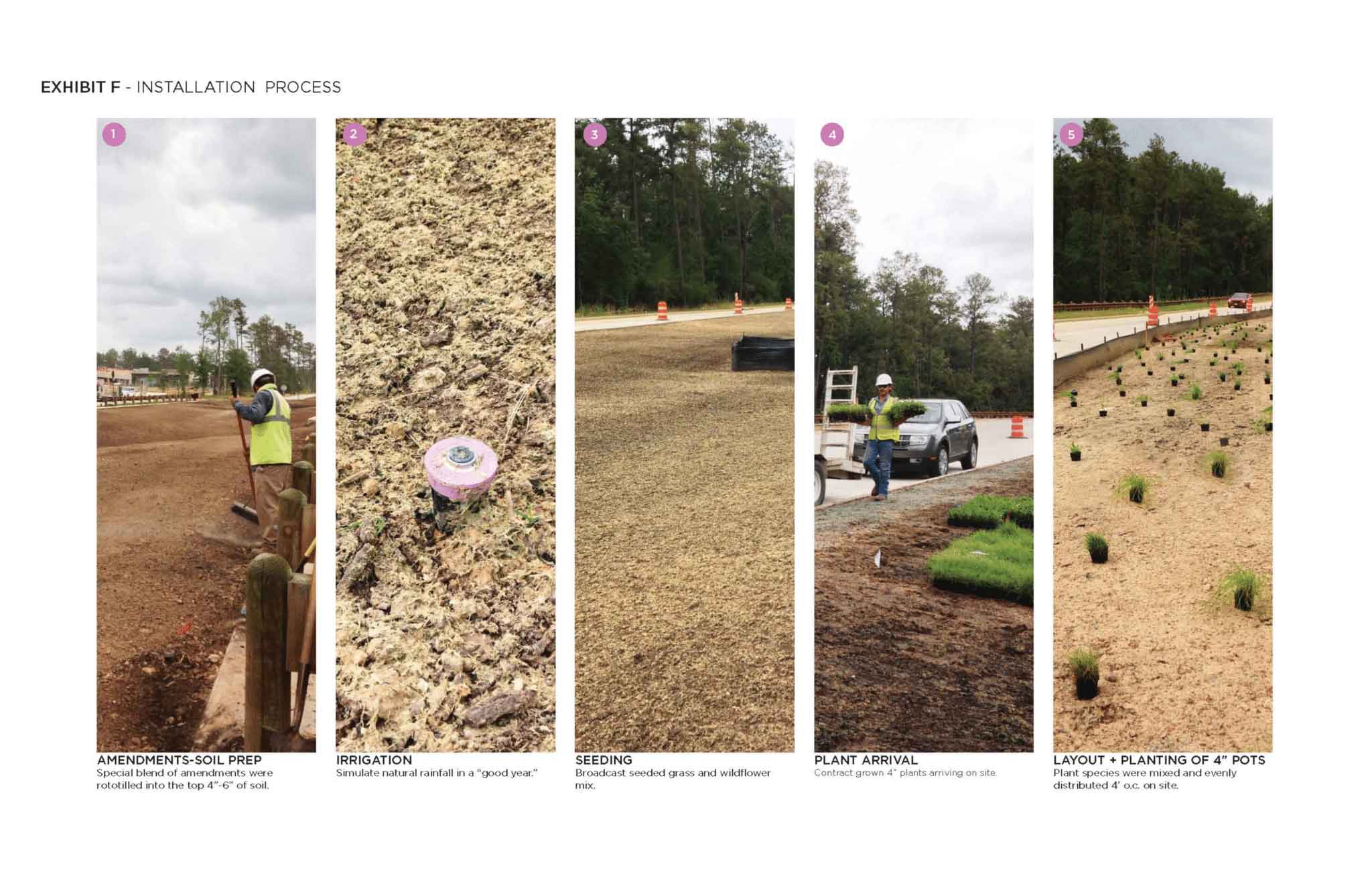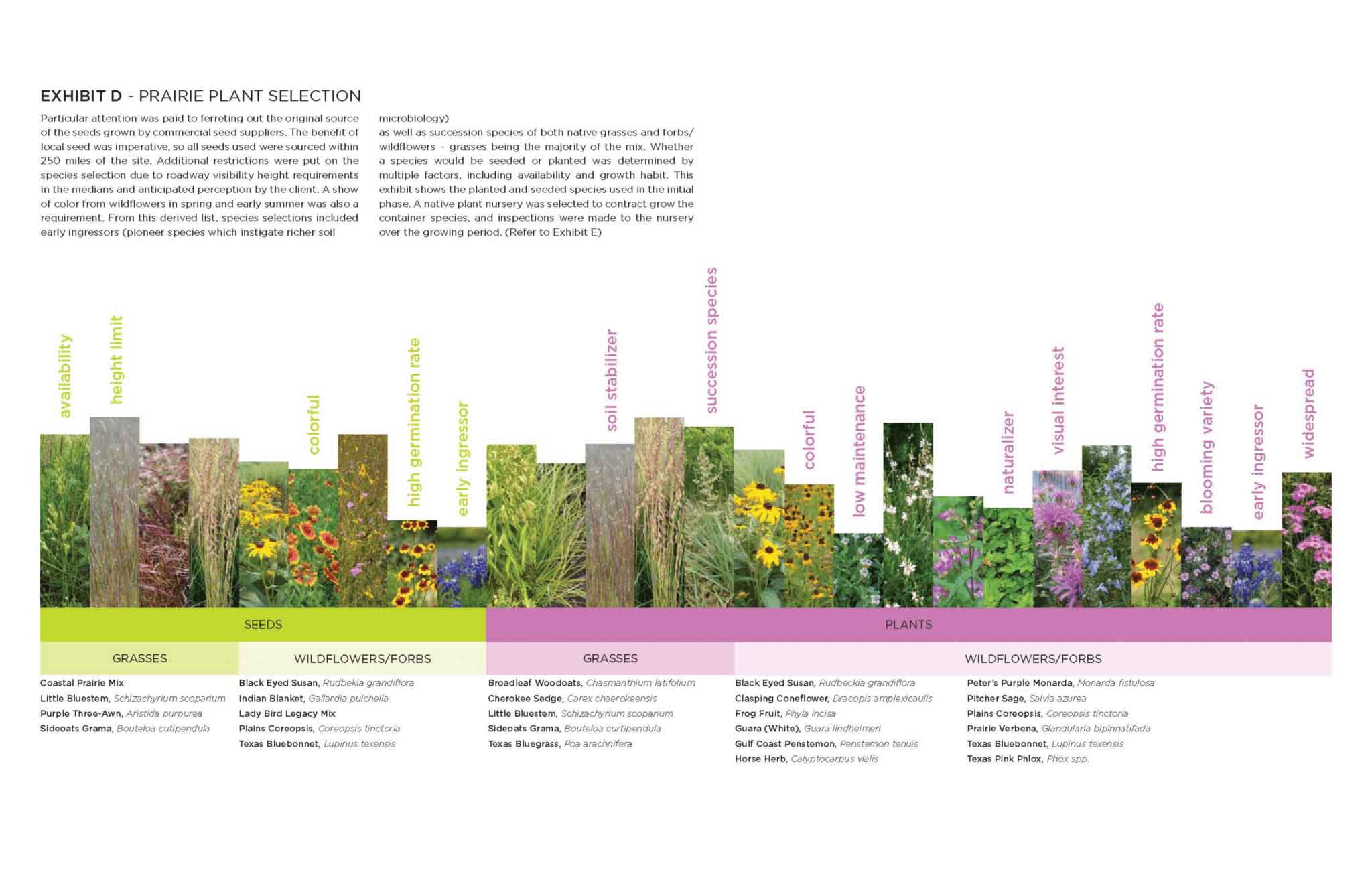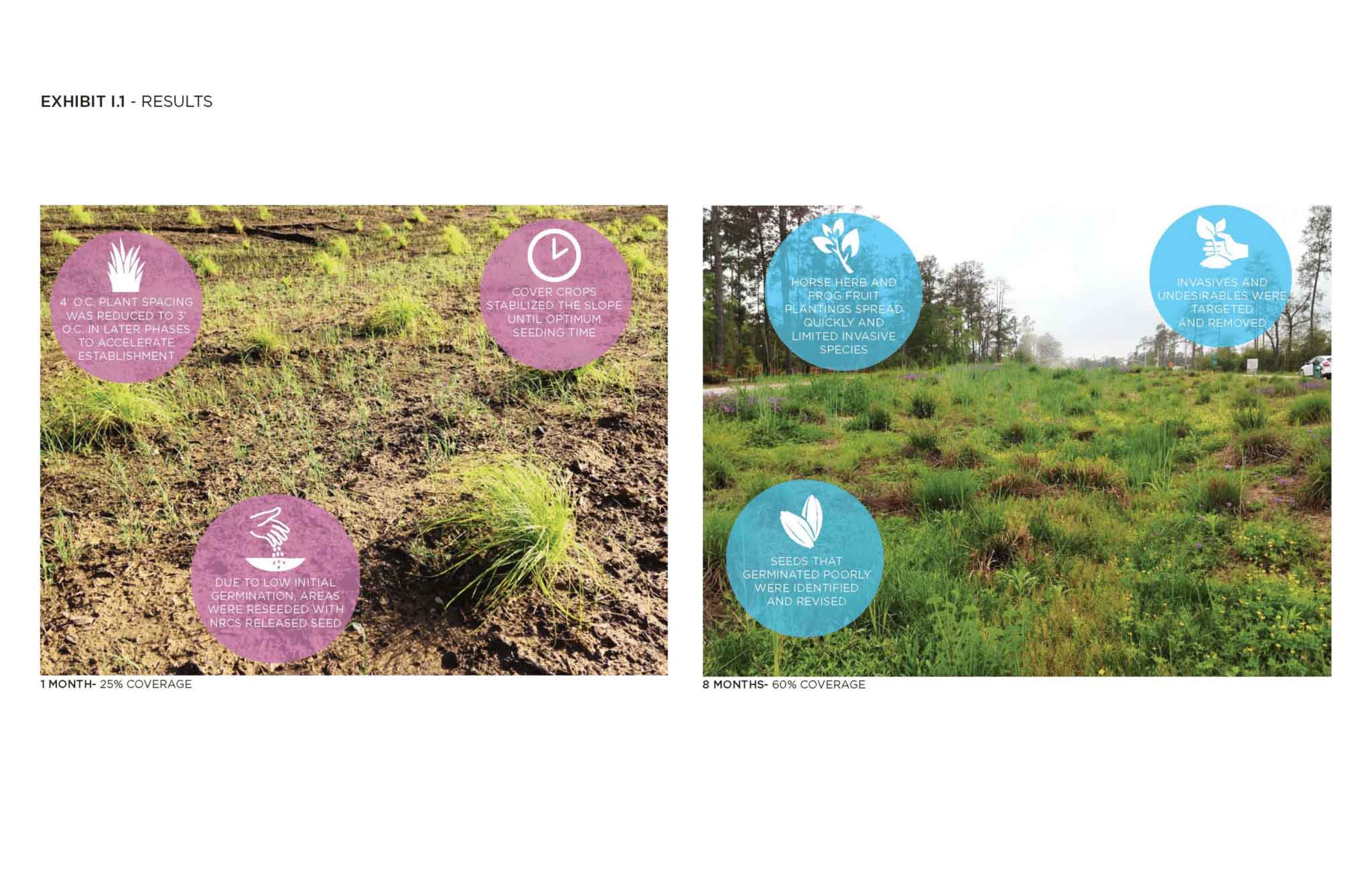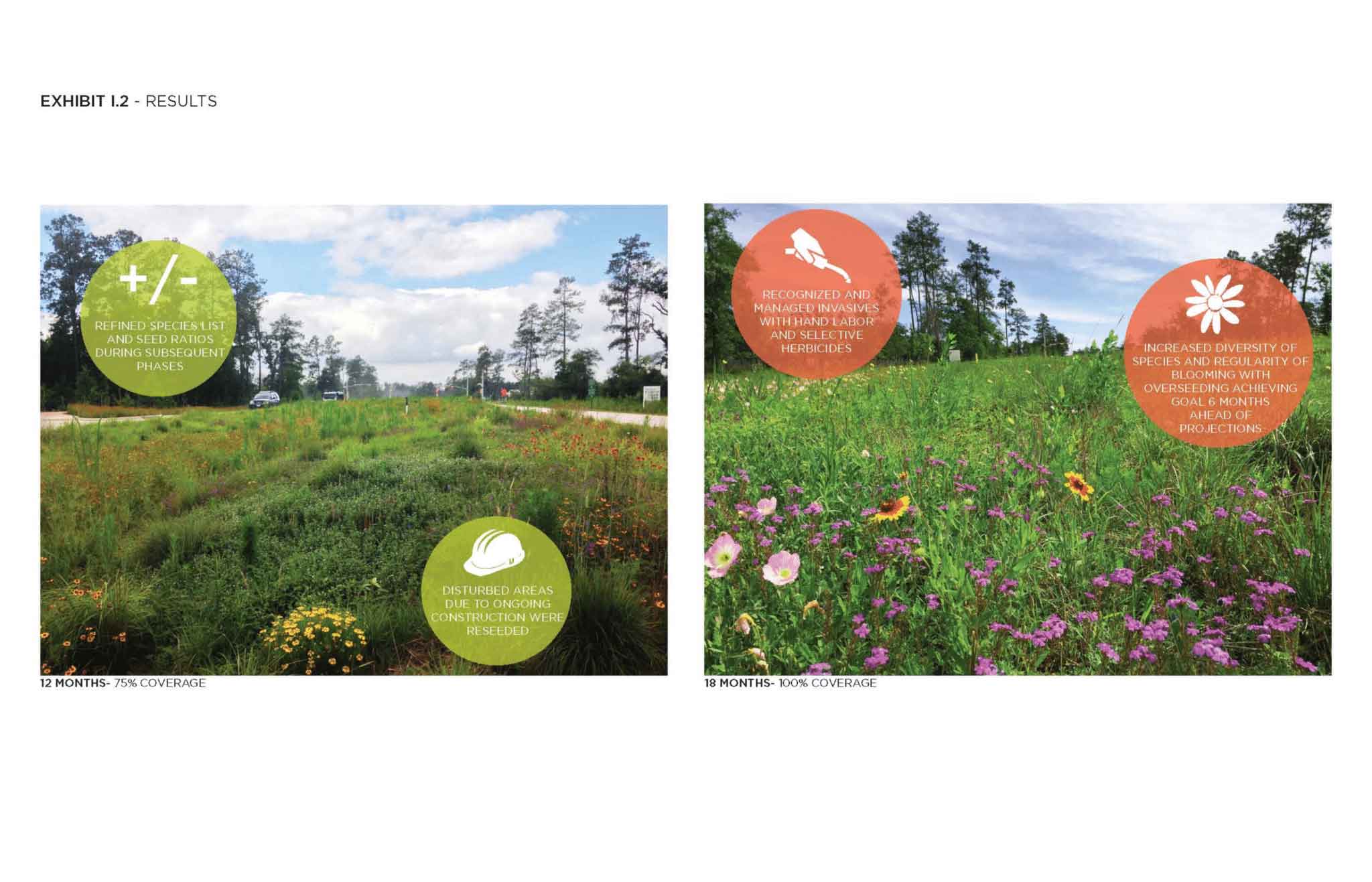CASE STUDY
Establishing a New Precedent for Gulf Coast Prairie Planting
PROJECT: Springwoods Village Parkway
CLIENT: CDC Houston, Inc.
LOCATION: Spring, TX
To meet our client's sustainability goals and two year timeline, the Clark Condon team developed a new approach to prairie restoration. This exciting project is now spurring new research in sustainable, native landscapes in Texas.
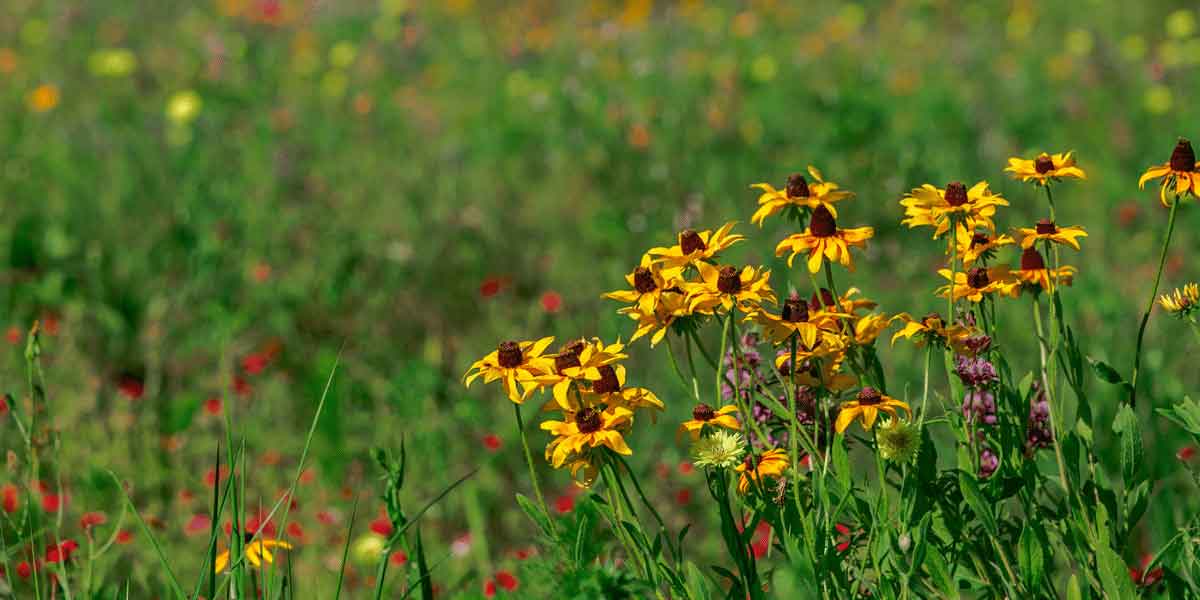
The Scene
A commercial developer set out with an aspiration to create the most sustainable master-planned community in the nation. Springwoods Village is a 2,000-acre development coming to life in Spring, Texas in a unique ecosystem where the piney woods of East Texas meet the prairies of the Gulf Coast Plains. As new roadway winds through the forests, the openings created by wide medians, bioswales, rights-of-way, and a natural-gas pipeline easement provided a unique opportunity for a 25-acre, 1.8-mile linear prairie. Inherently compelled by the calling to be stewards of the environment, we chose to research and restore the land in a way that pays homage to the original character of the landscape.
The Project
The creation of a short-grass, native prairie was presented to the client as a solution to provide a sustainable landscape through a future of reduced maintenance and water usage. The client’s expectation that the prairie be established within two years presented a unique challenge considering prairies generally take four to five years to flourish. Techniques for prairie restoration along the Gulf Coast are in their infancy and are limited by season, experience, and species availability. However, we seized the opportunity to accelerate the establishment of a prairie and ultimately to set a precedent for how landscape architects everywhere look at prairie restoration. Our goals as a design group were to increase and improve regional research, fill in missing pieces through experimentation and document our process knowing that the methods and results would be valuable to the profession.
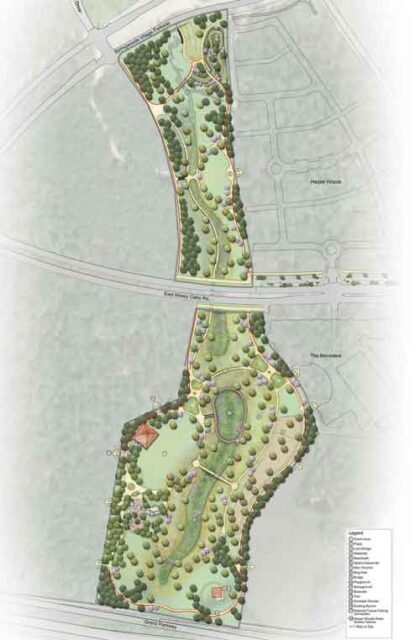
The process
To begin understanding the ideal approach to accelerating the establishment of a prairie, we utilized site analysis, case studies, experts, plant nurseries, growers, seed suppliers and technical references. We evaluated past and current prairie restoration projects through site visits and discussions with researchers, environmental botanists, soil scientists and conservationists. We explored plant species options by visiting nurseries and talking with growers and seed suppliers. Through careful research and thoughtful analysis, we discovered that using the methods of both planting and seeding produce an established prairie in two years compared to a typical establishment period of six years using seeds alone.
Soil amendments, plant selection, installation and maintenance strategies were thoroughly researched and prescribed to create the optimum project plan. As the process came to fruition, careful observation and field adjustments would ensure project success.
The success of the plan would begin in the soil. After the previously forested site was cleared, the native typical soil horizon changed significantly. The microbiology had to be manipulated to meet the requirements of grassland and to promote healthy seed germination. While determining the appropriate soil amendments, the plant list had to be considered. Preparation of a plant species inventory involved a list of desirable species versus a list of available species. A comprehensive list was prepared from personal experience with native plants and a study of local prairies; tours of prairie restoration sites; and discussions with local conservationists, biologists, and horticulturalists. A study of successful native plant projects, discussions with expert plant growers and tours of five nurseries within a 250-mile radius of the project site established which natives were commonly available in the trade, what could be grown and the container sizes most economical and effective for production of the materials.
The contract-grown grasses performed particularly well in the 4” pots, with sideoats grama and little bluestem establishing quickly with a nearly 100% success rate. In particular, sideoats grama was selected because it is a prolific reseeder. In phase one, the pots were placed 4’ on center in the medians and rights-of-way, 3’ on center in the bioswales and 2’ on center on slopes.
The results of seeding were also examined. The seeds were from prairie collections or Natural Resources Conservation Service (NRCS) releases. The germination of the sideoats grama NRCS release created a 25% cover in the first three months. While the mowed prairie seed collection offered a diversity of species, the total live seed count was not guaranteed, and the germination rates were untested. As a result, germination rates in the first months were under 10%. The first phase was reseeded with additional NRCS releases of little bluestem and sideoats grama. As the prairie matures into year three, evidence of germination of the mowed prairie seed collection is being seen in an increased diversity of species.
The maintenance strategy and intensity were also crucial to success within the time frame; therefore, it was determined that irrigation would be necessary during the establishment period.
The result
After two years, the experiment of accelerating the establishment of a prairie has proven a success based on diversity of species, annual regeneration, sustainability, and overall monetary savings. The goal of establishment was met six months ahead of the deadline, and statistics comparing turf grass versus native grasses indicate the prairie as a sustainable landscape after a two-year period. Now, several years after the initial planting, the grasses continue to thrive and function as intended.
Success continues with other properties in the development establishing prairie landscape, showing an increased acceptance of the use of a prairie in developing areas. The Springwoods Village prairie encourages growers to increase their supply of native plant and seed sources. This is an important paradigm shift in the industry, making it more feasible for landscape architects to sell the implementation of a prairie to their clients. Now having a prime example of a native landscape in a high-end development in the Houston area, we have actively extended the valuable lessons to our peers, clients, and community.
This project is a catalyst. Others are now using the findings to fuel their projects. It also spurs the need for further research in the field. Water usage and maintenance can be tracked long-term to collect ongoing data. Continued studies of prairie systems can be performed to determine the best combination of plant species for future restorative programs. The door to sustainable, native landscapes and their acceptance has been opened a little wider in Texas.

